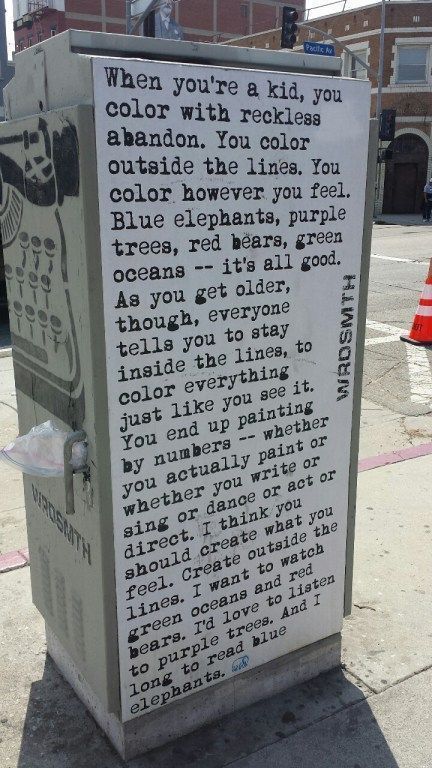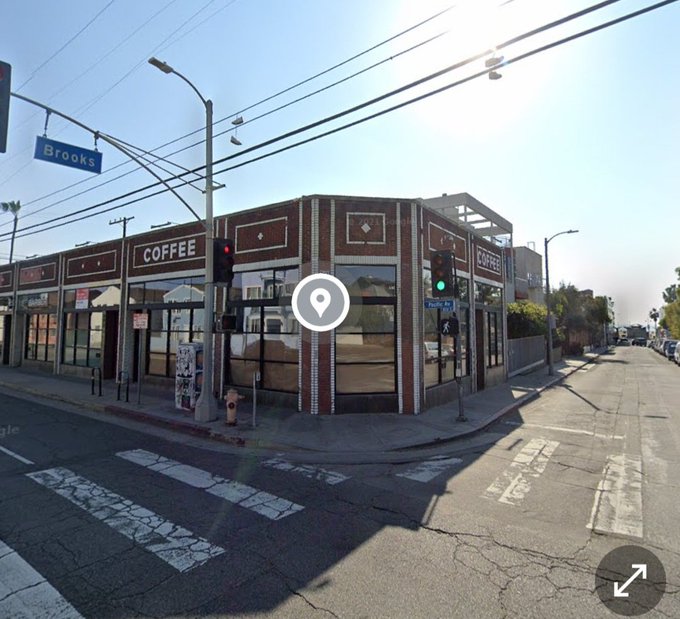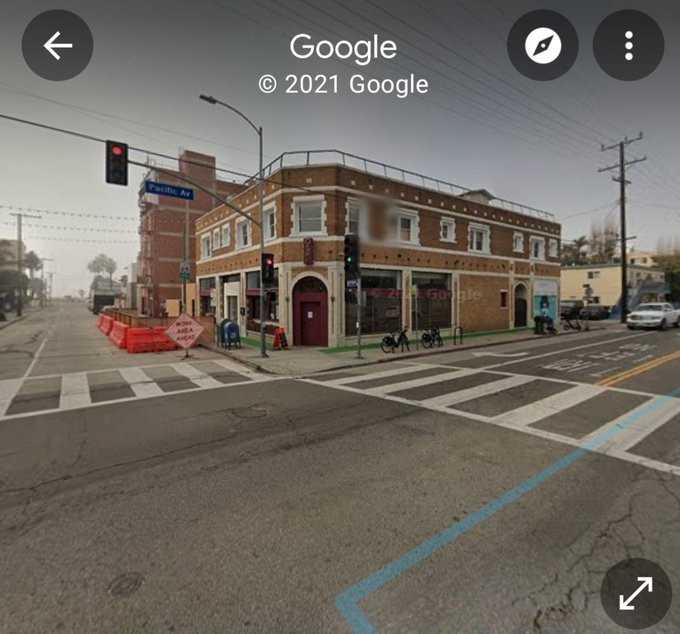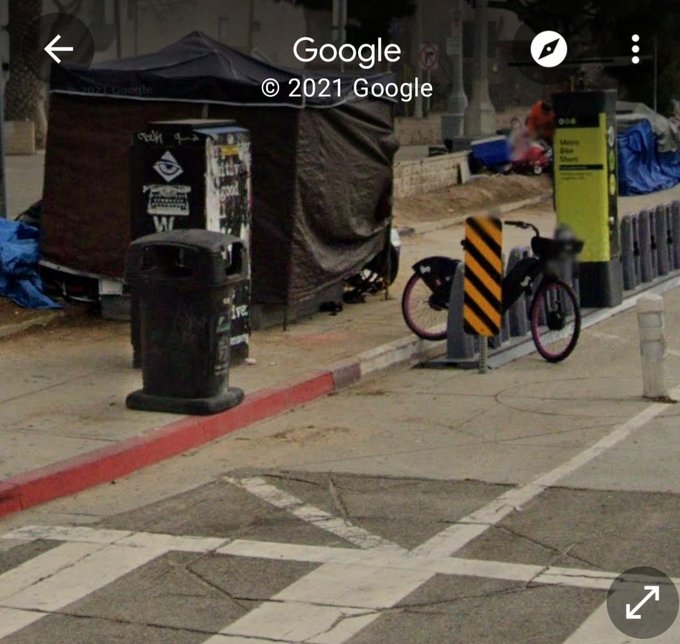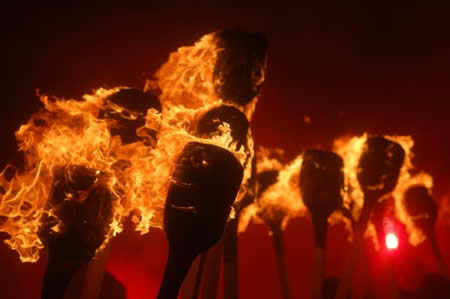What do Howard Hughes and the Gabrielino-Tongva Indians of Southern California have in common? It happens they shared a plot of land on the Westside of Los Angeles, separated by eons of time and circumstance. And they may also have shared a plot or two in the Otherworld.
While doing research on ghost hunting for a novel, I came across a book called Ghost Hunter’s Guide to Los Angeles by Jeff Dwyer. It’s part of a series, each set in a different city, and basically gives a brief overview of ghost hunting techniques and equipment followed by a long list of “haunted” locations.
Imagine my peaked interested when Playa Vista was listed, a stretch of land just down the hill from where I live, and part of the rampant development of the Ballona wetlands which once peacefully coexisted with the undeveloped runway of Hughes Aircraft. Howard Hughes refused to develop this land—the last piece of prime, “under-utilized” property on the desirable Westside of Los Angeles. At his death, the moneymen were wetting themselves in anticipation of the plunder. Because Hughes’s will situation was in chaos at the time of his death, it took many years, many lawsuits, and countersuits to get things squared away. The abandoned Hughes site contained old office buildings and engineering buildings, massive aircraft hangers (including the one where the Spruce Goose was assembled), and a runway. Movie companies were the only ones using this property for a long time, the empty hangers becoming sound stages. Parts of Titanic were filmed there, among other blockbusters. Raleigh Studios still retains these hangers, but the rest of the property has been highly developed.
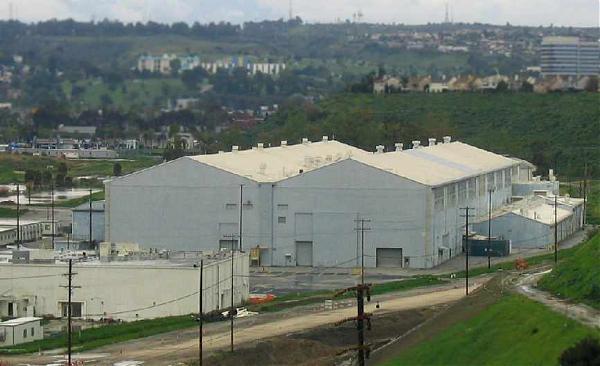 Hughes Aircraft/Raleigh Studios hangers.
Hughes Aircraft/Raleigh Studios hangers.
Enough strange things happened in these buildings that paranormal investigators came to check it out. Reportedly, the abandoned office buildings were especially active. A memorable episode of the paranormal T.V. show, Dead Famous, comes to mind, in which the intrepid investigators had many spooky adventures at the old Hughes complex. (I’m ashamed that I remember this—and so many other stupid-spooky shows—but I am a ghost show addict. I can’t help myself.) An anthropologist who worked on site reported the ghost of a small 1950s era white boy seen by many of the folk on the property. This little ghost even followed her home upon occasion. They also repeatedly saw “something colored bright white moving along just at the corner of their vision… For reasons that she was never quite clear on, she and the other workers came to the conclusion that the white shape seen moving in the lab was another spirit, specifically the ghost of Howard Hughes. As far as she knows, people on the project continue to see it.â€
Finally, the lawyers and the moneymen stopped arguing and settled things in the courts. It was decided by the victors that the Hughes property would become a new live-work-play development (mixed residential, business, and entertainment) called Playa Vista. This was a massively controversial project from the start, as many wanted to protect the wetlands and the openness of the area, but the LA Board of Supervisors caved, as they always do when massive amounts of development money are involved. The Playa Vista project was bulldozed through the approval pipeline and the bulldozing of the Hughes property began.
Imagine everyone’s chagrin when the excavations uncovered human remains: what was left of a massive Gabrielino-Tongva Indian village and cemetery that had occupied the site for centuries (some say thousands of years) before Hughes got ahold of it. The developers were required by law to call in archaeologists, and tried to pass it off as a few paltry bones that they flung into a storage shed, treating them with great disrespect. It turned out this was a major archaeological site and around 411 bodies were recovered. The problem, as far as the Gabrielino-Tongva were concerned, is that their tribe is not federally recognized. This means they are not legally entitled to “repatriationâ€â€”that stipulation in U.S. Federal Law which requires Native American graves and artifacts to be treated with respect and reburied with tribal ritual after being disturbed. You can read about the whole sordid story in detail here and a more condensed version here.
Eventually, and with many years of pressure from Indian activists, the Playa Vista people agreed to set aside a memorial place where the bones could be shuttled out of the way of the development, out of sight of the rich folk, and reinterred. If this city blog can be believed, this took place on December 11, 2008. (I leave it to you to decide whether this memorial is cheesy.)
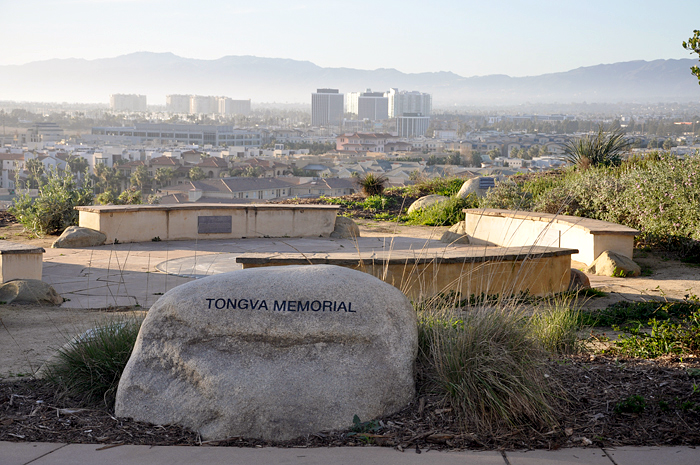 The Tongva Memorial
The Tongva Memorial
Now, as many a paranormal investigator will tell you, disturbed Indian gravesites are just asking for trouble. Some will say this attitude is racist, “blaming†the Indians for every weird quirk that happens on a property they once occupied. There are others who don’t look upon this as blaming the Indians, but perhaps as a matter of the disturbed dead seeking redress for the genocide visited upon them by Europeans. I probably fall into this latter camp, although it’s possible I am an unwitting racist. I would not be the first middle-class white girl reluctant to confess to that particular sin.***
Regardless, Mr. Dwyer (you remember him from way up top at the start of this post?) states that, “Disturbance of these graves may be linked to strange mists that have been seen in the area. Small blue clouds float a foot off the ground and rise to a height of about four or five feet. At times they are stationary but sometime (sic) they move, slowly, against the wind.” Those pesky orbs so beloved of paranormal investigators have also been sighted and “there are reports of electrical and mechanical problems” at the construction site. “It is anticipated that occupants of several new homes and offices in this development will experience paranormal activity…”
I will confess that having lived in this area all my life and passed through that particular stretch of highway more times than I can count, “tooley” fog (aka tule fog) has always been prevalent on that road between the Westchester bluffs and La Ballona Creek (no more than a quarter mile north). This is one of the only places I know of on the Westside of LA where this fog happens and I’ve seen it many times, usually late at night. Although I don’t remember it ever being blue or moving against the wind. Mostly, it just sits like the spirit of malcontent, thick as dread, hugging the ground while ten feet off the earth the air is clear. The Ballona wetlands have always been an eerie place. Back in the day there were no streetlights, and at night that part of Lincoln Boulevard tended to be as dark as the heart of a developer, with nothing but empty fields, scattered and abandoned buildings, and that ground-hugging fog in the right weather. Driving through there late at night by myself really gave me the shivers. Not hard at all to imagine uneasy spirits even before they dug up those graves.
The development has civilized it somewhat, lifted the highway ten or fifteen feet (which was a good thing as it flooded rather badly when we actually had rain), put in streetlights and masses of butt-ugly buildings. The land west of Lincoln Boulevard was set aside as protected wetlands and a bird sanctuary, but Playa Vista continues to screw with the land and undercut the natural habitat of the wetlands. They have to be continuous monitored by environmentalists and activists. Besides all that, they ruined a perfectly good scary place and I will never forgive them for it, but I have to say, strange fogs are not particularly convincing to me as evidence of spirit activity.
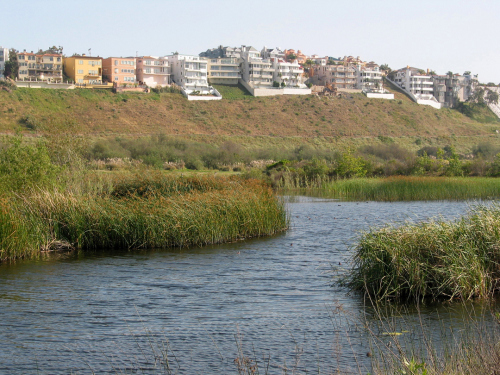 Restored Ballona wetlands with southern range of butt ugly buildings.
Restored Ballona wetlands with southern range of butt ugly buildings.
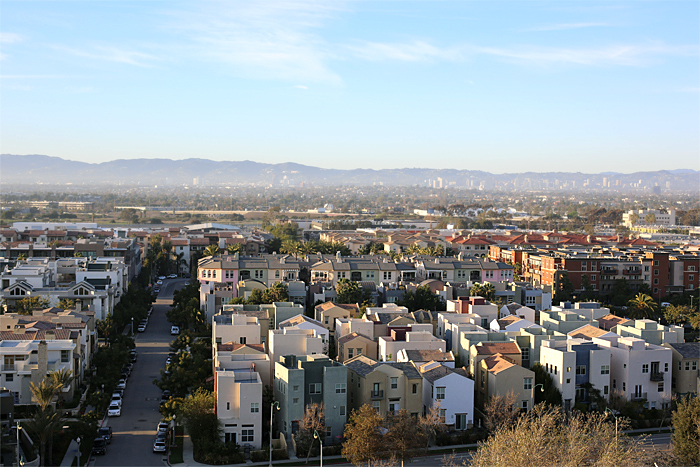 Eastern reach of butt ugly buildings on the Hughes property.
Eastern reach of butt ugly buildings on the Hughes property.
Orbs spotted with the naked eye? Maybe. (On digital cameras—no, I don’t think so. Too many rational explanations.) Electrical and mechanical problems? Maybe. Or maybe not. Things flying around a Playa Vista apartment and horrid noises in the night? Now that I’d like to see—if anything like that had been reported. Which, as far as I know, it has not. And maybe that’s all the Playa Vista stories are at this point: resentful people like me who didn’t like to see that rapacious development and would enjoy casting a ray of darkness upon it for spoiling our fun.
But, aesthetic principles aside, I would not be caught dead living in one of those butt ugly buildings. Just in case.
***ETA 2/8/19: In the intervening years I’ve moved more towards the “this is racist” camp. Whereas I think it’s possible that the spirits of Indians pissed off because their resting place was desecrated would haunt a location, I don’t believe it’s any more likely than the pissed off spirits of white folks or any other ethnic or racial group.
![]()
![]()
![]()  Yep, Pacific and N. Venice. I used to live two blocks from here, right across the street from Billy Al Bengston’s studio but that was a hoary great age ago.>/i>
 Yep, Pacific and N. Venice. I used to live two blocks from here, right across the street from Billy Al Bengston’s studio but that was a hoary great age ago.>/i>![]()
